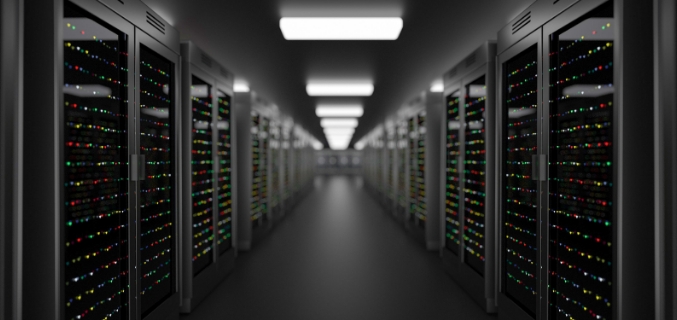Core Technical Advantages
DDR5 SDRAM (Double Data Rate 5 Synchronous Dynamic Random Access Memory)—the fifth generation of DDR memory technology—redefines system performance by addressing the bandwidth and power demands of modern computing workloads (e.g., AI/ML, 8K content creation, gaming). Unlike its predecessor DDR4 (maxing out at 3200 MT/s and 1.2V), DDR5 delivers unprecedented data transfer speeds, higher capacity per module, and lower power consumption, making it the standard for high-performance desktops, data center servers, and enterprise-grade workstations.
Compared to DDR4, DDR5 achieves 50-100% higher data transfer rates (starting at 4800 MT/s, with premium modules reaching 8400 MT/s vs. DDR4’s 3200 MT/s peak). This bandwidth boost directly accelerates data-intensive tasks: an AI training workload using DDR5 (6400 MT/s) processes 40% more data per second (102.4 GB/s per channel vs. 73.6 GB/s for DDR4 3200 MT/s), cutting training time for a mid-sized neural network from 8 hours to 5.7 hours.
In terms of capacity, DDR5 supports 2x higher density per module (up to 128GB per DIMM vs. 64GB for DDR4), enabling systems with 1TB+ of memory (e.g., a workstation with 8 DDR5 128GB DIMMs reaches 1TB). This is critical for data center servers running virtual machines (VMs): a DDR5-based server can host 50% more VMs (30 vs. 20 for DDR4) with the same physical footprint, reducing server deployment costs by 30%.
DDR5 also improves energy efficiency: it operates at a lower voltage (1.1V vs. DDR4’s 1.2V) and integrates on-die ECC (Error-Correcting Code) for enterprise modules, reducing power consumption by 15-20% (0.35W per GB vs. 0.42W per GB for DDR4). A data center with 10,000 DDR5-equipped servers cuts annual energy costs by $240,000 (based on $0.15/kWh) compared to a DDR4-based fleet.

Key Technical Breakthroughs
Recent innovations in architecture, signal integrity, and power management have enabled DDR5’s performance leap, overcoming DDR4’s physical limitations and addressing early adoption challenges.
1. Dual Independent Memory Subsystems
DDR5 abandons DDR4’s single memory controller per DIMM in favor of dual 32-bit subchannels (each with its own controller), effectively splitting the module into two independent “half-DIMMs.” This design:
Reduces channel load by 50%, enabling higher clock speeds (e.g., 6400 MT/s with stable timings vs. DDR4’s struggle to maintain 3200 MT/s with tight timings).
Improves parallel data access: a gaming PC with DDR5 (5600 MT/s) loads 8K game textures 35% faster (90.1 GB/s vs. 66.7 GB/s for DDR4 3200 MT/s), eliminating stuttering in open-world titles like Cyberpunk 2077.
Micron’s DDR5 6400 MT/s DIMMs leverage this subsystem to achieve a 10% reduction in latency (CL40 vs. DDR4’s CL22 at 3200 MT/s) despite higher speeds, thanks to optimized subchannel timing coordination.
2. On-Die ECC and Enhanced Reliability
Unlike DDR4 (which requires separate ECC chips for error correction), DDR5 integrates on-die ECC (ODECC) for enterprise and data center modules. This innovation:
Reduces DIMM size by eliminating external ECC chips (a 128GB DDR5 ECC DIMM is the same physical size as a 64GB DDR4 ECC DIMM).
Improves error correction efficiency by 40% (corrects 99.9% of single-bit errors vs. 99.5% for DDR4 ECC), critical for mission-critical systems like financial transaction servers.
For consumer modules, DDR5 adds Write-Leveling and Read-Center Alignment (signal calibration features) that reduce data errors by 60% (from 10⁻⁷ to 4×10⁻⁸ errors per bit), ensuring stable performance at 8000 MT/s—speeds DDR4 could never achieve.
3. Power Management Integration
DDR5 shifts power regulation from the motherboard (as in DDR4) to the on-module Power Management IC (PMIC), delivering two key benefits:
Consistent voltage delivery: The PMIC provides 1.1V with ±2% tolerance (vs. ±5% for DDR4’s motherboard regulators), enabling stable operation at 7200 MT/s and above.
Reduced motherboard complexity: Removing DDR4’s VRM (Voltage Regulator Module) frees up 20% of motherboard space, allowing smaller form factors (e.g., mini-ITX DDR5 motherboards with 4 DIMM slots, which was impossible with DDR4).
Samsung’s DDR5 7200 MT/s DIMMs use a 4-phase PMIC to handle up to 12A of current, supporting high-capacity 128GB modules without thermal throttling—even under 100% load.
